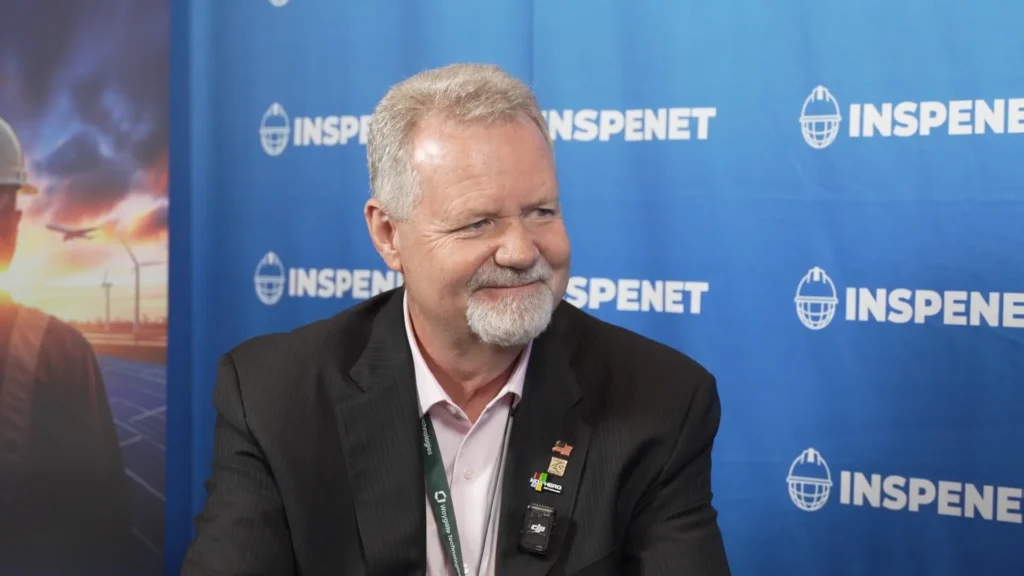Clyde May, president of The American Society for Nondestructive Testing (ASNT), leads an organization that works quietly but with enormous impact on global security. In his role, he drives the visibility of a little-known but essential field: nondestructive testing, known as NDT.
During an interview at the ASNT 2025 event, he clearly explained how this discipline intervenes in the most critical sectors of our daily lives, and how ASNT is addressing both the lack of visibility and the deficit of qualified professionals.
Simply put, nondestructive testing is a set of techniques that allows examination of components or structures without damaging them, ensuring their integrity and functionality. "It's like being a doctor for structures," May explained, alluding to one of his colleagues who often says he works as a "pipe doctor."
Just as an X-ray can reveal a fracture without opening the human body, nondestructive testing can detect internal flaws in materials without compromising their use, using technologies such as ultrasound, radiation or magnetic techniques.
Although few people are familiar with the term, nondestructive testing is present in almost every aspect of the modern world. From aviation to high-speed trains, oil pipelines to refineries and automobiles, NDT quietly watches over our safety.
Clyde May illustrates it clearly, if NDT inspections were not performed on aircraft, "mid-air accidents would be a regular occurrence," as the checks ensure that the engines do not fail in mid-flight and that the airframe maintains pressure properly.
In trains, especially high-speed trains in Europe, NDT inspects both the rails and the mechanisms of the vehicles; even in the automotive industry, many structural parts go through NDT processes before the vehicle reaches the market.
The ASNT is the leading organization in the United States dedicated to the development, regulation and promotion of nondestructive testing, with work that goes far beyond the technical.
Each year, they invest about $1 million in advocacy campaigns to increase public awareness of what NDT is. In addition, they have a permanent representative on Capitol Hill, lobbying to insert the issue into the country's education and labor policies.
Among its highlights are the annual conferences that bring together thousands of experts from all over the world. These events feature presentations, practical skills, such as the recent ones on ultrasound and artificial intelligence applied to the sector.

One of the most striking strategic changes that ASNT has promoted is the educational focus, where initially they targeted their campaigns to secondary schools. However, recent research has shown that vocational curiosity is defined much earlier, so the effort is now focused on primary education.
"The goal is to activate that spark of curiosity before the career path is defined."
Clyde May.
The NDT industry faces a serious labor imbalance, with 25% to 30% of professionals retiring each year, while only 6% to 8% of new workers are hired. This situation generates a growing gap in an industry that cannot be stopped, since the safety of millions of people depends on it. Therefore, ASNT is clear that raising awareness, training and attracting young talent is a priority to ensure the continuity of the sector.
In a world where artificial intelligence (AI) is advancing rapidly, it is valid to ask whether it will replace certain technical tasks. For Clyde May, AI will not replace NDT, but it will complement it.
The global challenge is not only technical, but demographic. With birth rates declining for the past two decades, fewer people will be available for work each year. In this context, AI becomes a useful tool to close operational capacity gaps, not to displace humans.
The global challenge is both technical and demographic due to the declining birth rates of the last two decades, a trend that will progressively reduce the population available for work. Against this backdrop, AI emerges as a fundamental tool to fill operational capacity gaps, with the aim of complementing human labor rather than replacing it.
NDT is a vital, yet little known, technology that imperceptibly ensures the security of our most critical infrastructures. Thanks to leaders like Clyde May and organizations like ASNT, this discipline is beginning to receive the recognition it deserves. Thus, the combination of early education, technology and institutional visibility is the formula that will allow NDT to continue to secure millions of lives in the future.
For more content about ASNT 2025, please visit our LinkedIn profile.
Source: Inspenet.